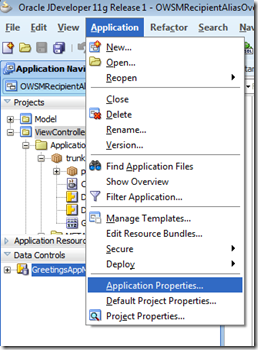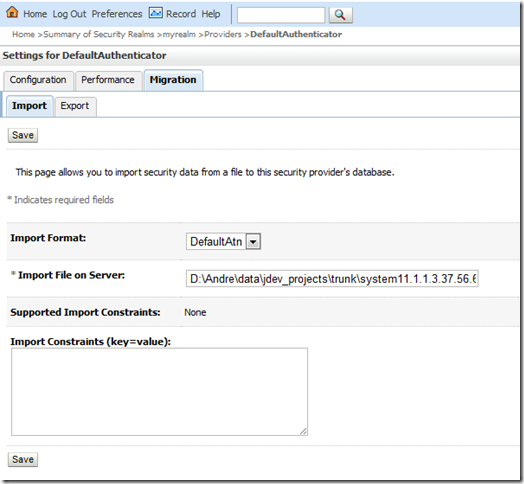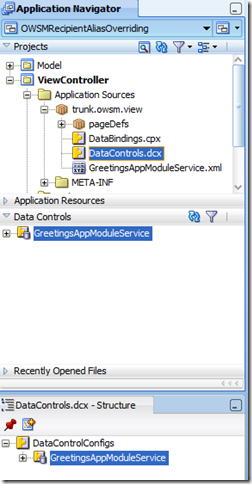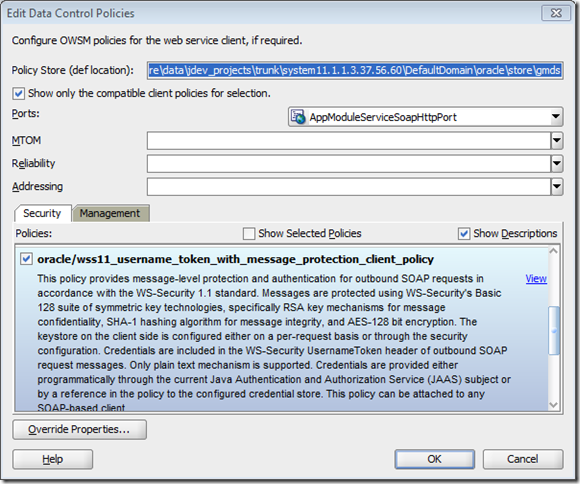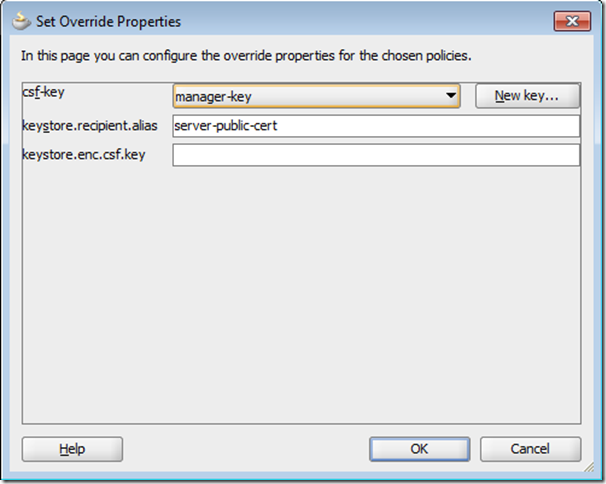Have you ever wondered what their purpose is, their life cycle and how they relate to WLS domain security configuration? This article is just about it.
As you might know, secured ADF applications leverage OPSS (Oracle Platform Security Services). OPSS is a fundamental component within Oracle Fusion Middleware security. It works as an abstraction layer on top of security services providers, shielding applications from all the complexities in dealing with them. For instance, applications can transparently switch between file-based and LDAP-based policy stores. Likewise for credential store services.
Let's take a closer look at each of those artifacts and their life cycles.
jps-config.xml
This file can be seen as the lookup services registry for OPSS. Among these services are login modules, authentication providers, authorization policy providers, credential stores and auditing services.
Whenever an OPSS-enabled application requires security services, it looks up a JPSContext object where all the necessary services are supposedly configured.
In ADF applications, a workspace-level jps-config.xml is created once ADF security is enabled. It drives services lookup for ADF's BC (Business Components) Tester available in JDeveloper, which is a JavaSE application. If you want to have security unit tests, you can also easily leverage it.
It is never used once the ADF application gets deployed in a WLS container, even though it is packaged in the ear file. Within a WLS container, a jps-config.xml in <domain-home>/config/fmwconfig is used by all applications in all servers deployed in that WLS domain. There's no such concept of an application-level or server-level jps-config.xml.
jazn-data.xml
This file keeps users, groups and authorization policies for OPSS-enabled applications and is automatically created once ADF security is enabled. I've already covered users and groups life cycles in a previous article. It is important to mention that users and groups are also leveraged by ADF's BC Tester and can be integrated into security unit tests as well.
Authorization policies are, if not the most, one of the most sensitive parts of a secured ADF application, since it governs who has access to what. As you might guess, they are also leveraged by ADF's BC Tester. When the ADF application is deployed into WLS, at startup time, policies are OOTB (Out-Of-The-Box) migrated into the configured policy store, who, by default, is a file called system-jazn-data.xml, located under <domain-home>/config/fmwconfig. You can configure how (and if) policies are migrated through some properties in weblogic-application.xml. Here they are:
<listener>
This listener is the one actually responsible for pushing the changes to the runtime policy store. Make sure it is present in weblogic-application.xml. Otherwise, you’ll experience a lot of frustration in trying to deploy authorization policies along with your application.
<application-param>
MERGE, OVERWRITE and OFF are exclusive and applicable for deployments and redeployments. And they mean exactly what you might be thinking.
- MERGE will merge what’s already available in the runtime policy store. This might be particularly useful in some advanced deployments where more than one application share the same application policy stripe.
- OVERWRITE wipes away the existing application policy stripe and load all policies from scratch.
- OFF skips policy migration.
<application-param>
cwallet.sso
This file keeps credentials used by the application. A subtle and fundamental distinction is important to be made here: credentials and identities are not the same thing. Simply put, in OPSS, identities are what authentication requests are done against, while credentials are securely kept objects that are somehow presented to authentication providers to be matched against identities.
cwallet.sso is encrypted and you cannot browse it or explicitly edit it via JDeveloper. At design-time, different components make use of cwallet.sso and are responsible for creating the necessary credentials in it. Examples are OWSM policy attachments that override the csf-key and ADF connections requiring credentials in the call out.
If you need credentials that can’t be created within JDeveloper, you can either use wlst createCred online command or write some code using OPSS APIs. Both options makes the whole life cycle story a little catchy, because a running WLS container is necessary. You can also disable credentials migration and create them directly in the WLS domain where applications are deployed.
Like authorization policies, credentials are also OOTB migrated into the configured WLS domain credential store on application startup. By default, the credential store is the cwallet.sso file in <domain-home>/config/fmwconfig folder.
The following weblogic-application.xml properties govern how (and if) they're deployed.
<listener>
As for policies, the same listener migrates credentials. Avoid frustration and make sure the listener is present if you want to migrate or control how your credentials are migrated.
<application-param>
- MERGE: migrate non-existing credentials only;
- OVERWRITE: overwrites existing credentials;
- OFF: skips credentials migration;
